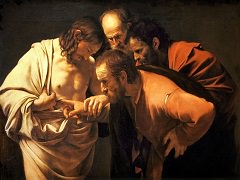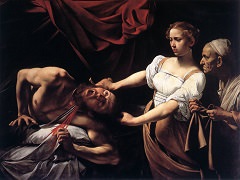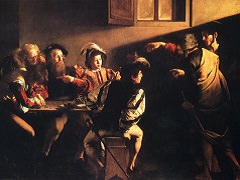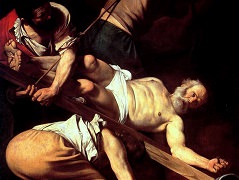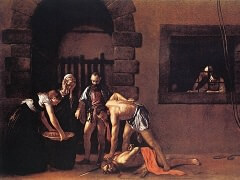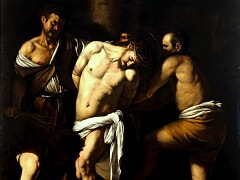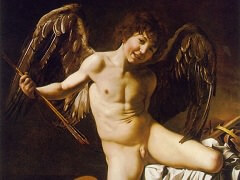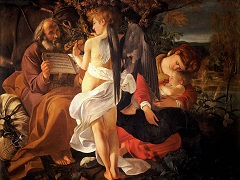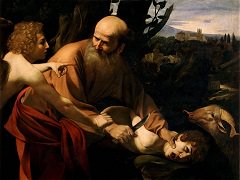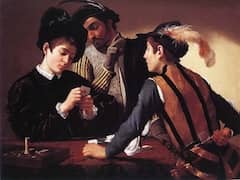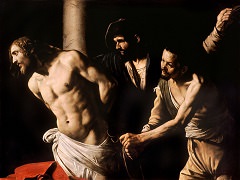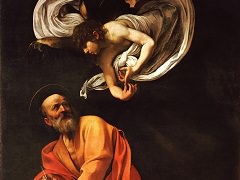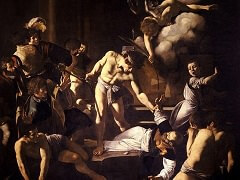Boy with a Basket of Fruit, 1593 by Caravaggio
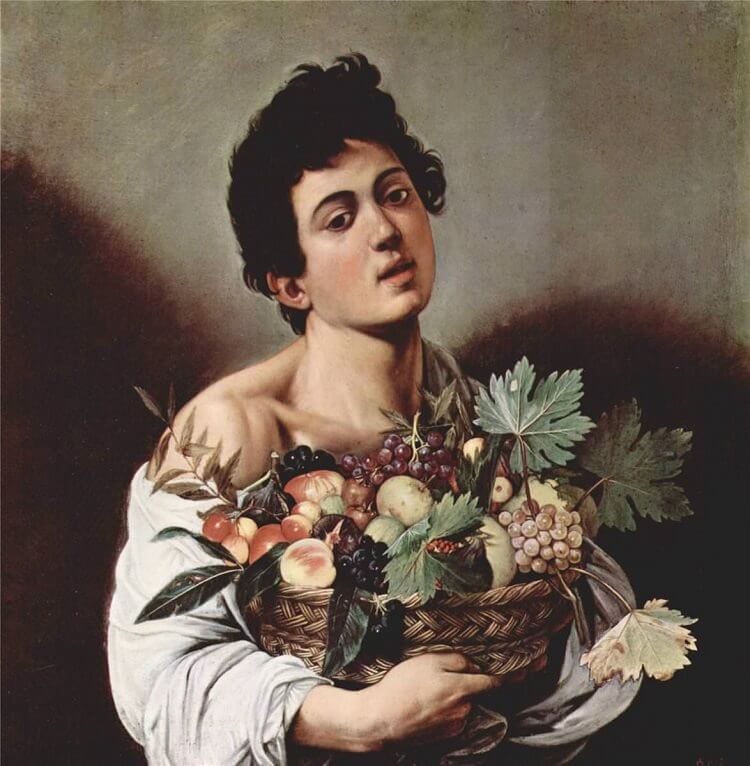
Boy with a Basket of Fruit was completed by Caravaggio when he was new to Rome and relatively unknown in the art world. The model for the boy in painting was Caravaggio's good friend Mario Minniti, who was 16 at the time, and
who would serve as one of his models many times in the future.
Red, black, and white grapes, apples, pears, apricots, figs bursting open, pomegranates, and grape, pear, and lemon leaves form an opulent bouquet of fruit, almost as aromatic and luscious as it is tactile and visual. The image
needs no explanation. It is as if Caravaggio had stopped a delivery boy on his way to the cavaliere's dining room with the basket already arranged for lunch and had preserved the instant as fresh and crisp as the fruit itself.
If the boy is knowing, he is not as yet fully defined, and he is without sexual conviction or malice. And if Caravaggio reflected on the boy's losing his youth almost as quickly as the fruit would rot or wither and dry, he left
that melancholic thought inexplicit.
The source, the natural daylight common to Caravaggio's early works, is from a window offstage to the left, between and above the artist and his model. Its rays illuminate the boy's right side fully, but only the upper third of
the background. Thus the picture is composed of contrasting areas of light (most of the figure and the still life, and the upper background) and dark (the model's hair, his right side, and the lower background). The result is an
emphasis on the tangibility of the objects in delicately atmospheric space, confirming both the illusion of the eyes and the authenticity of the episode, not as a fabrication of the painter's imagination but as a transcription of
his experience.
As a realist painter, Caravaggio did not idealize his paintings, instead he captured the very essence of what he saw on the canvas in front of him. This is beautifully clear in his portrayals of the fruit and leaves in the basket,
which are so realistic that they have been analyzed by horticultural scientists, who were able to accurately determine the individual cultivars.

